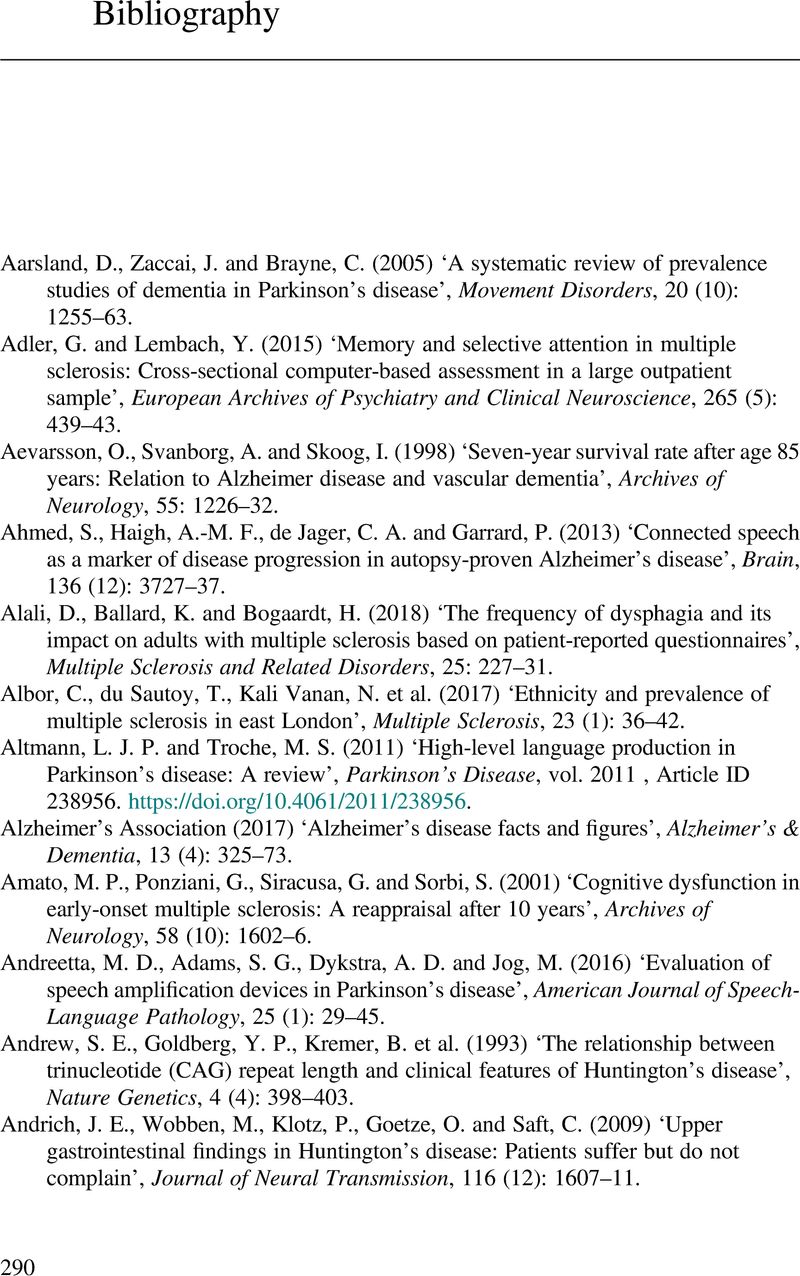Book contents
- Language in Dementia
- Language in Dementia
- Copyright page
- Contents
- Tables
- Preface
- Acknowledgements
- 1 Alzheimer’s Dementia
- 2 Primary Progressive Aphasia
- 3 Vascular Dementia
- 4 Mild Cognitive Impairment
- 5 Parkinson’s Disease Dementia
- 6 Huntington’s Disease
- 7 Progressive Supranuclear Palsy
- 8 Multiple Sclerosis
- Answers to Exercises
- Book part
- Glossary
- Bibliography
- Index
- References
Bibliography
Published online by Cambridge University Press: 18 September 2020
- Language in Dementia
- Language in Dementia
- Copyright page
- Contents
- Tables
- Preface
- Acknowledgements
- 1 Alzheimer’s Dementia
- 2 Primary Progressive Aphasia
- 3 Vascular Dementia
- 4 Mild Cognitive Impairment
- 5 Parkinson’s Disease Dementia
- 6 Huntington’s Disease
- 7 Progressive Supranuclear Palsy
- 8 Multiple Sclerosis
- Answers to Exercises
- Book part
- Glossary
- Bibliography
- Index
- References
Summary

- Type
- Chapter
- Information
- Language in Dementia , pp. 290 - 332Publisher: Cambridge University PressPrint publication year: 2020

